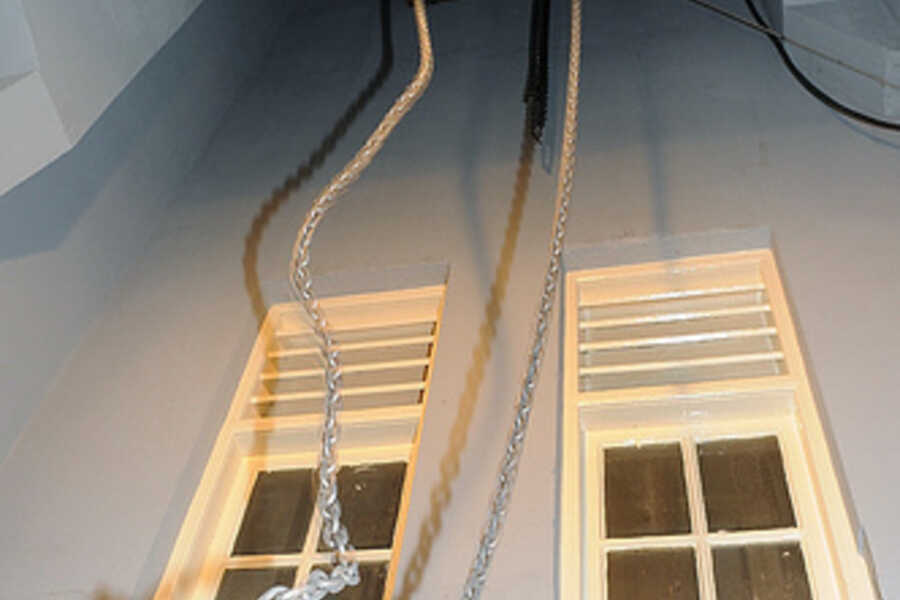In the first instant I work from a physical experience, a bodily reaction. How materials work and how they react on their surroundings. And how the viewer can be integrated in the work, be part of the experience. I like patterns and rhythms on a physical level. Seeking patterns is part of our instincts.
Chaotic systems; systems that react and work by definable laws but still have a seemingly unpredictable outcome. A small change in one of the variables of one particular place can have huge consequences for the outcome in other places: the Butterfly effect.
Where the viewer can be part of or can react to the work, you create another level of experience. By interacting the viewer makes the experience his or her own and this creates room for interpretation and association.
The container from Onshore/Offshore is moving very rhythmically, back and forth, and is only slightly effected by the weight of the people in it. In the movement there is very little chaos, as I define it. The chaotic part of it may be the movements of the light bulb which exaggerate small irregularities.
Some of my sculptures have a world of variables to play with, others have only a few. But as soon as there is movement, rhythm and patterns emerge, offering an ever-changing choreography.
"Have I found a pattern yet?" is the question I am most often asking, when I get caught looking at my own work. Quickly followed by "or is there none?"
There is an enormous urge to find patterns, to recognize the rhythms and structures that are present. Although large parts of the work react in similar ways over and over again, there are small differences that open a world of variables.


